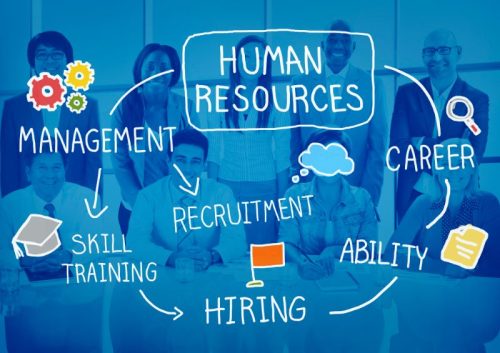In today’s competitive job market, organizations need to adopt proactive approaches to talent acquisition in order to stay ahead of the curve. Building a robust talent pipeline is crucial for attracting and retaining top talent, and it requires a strategic and proactive mindset. This article explores effective strategies for talent acquisition, focusing on proactive methods that can help businesses attract, engage, and hire the best candidates

1. Understanding the Importance of a Talent Pipeline & placement consulting
Placement Consulting is a talent pipeline that refers to a pool of potential candidates who are interested in working for an organization. It goes beyond traditional recruitment methods by focusing on building relationships and engaging with candidates even before a specific job opening arises. By investing in a talent pipeline, companies can reduce their time-to-hire, minimize recruitment costs, and ensure a continuous supply of qualified candidates.
2. Developing an Employer Brand
A strong employer brand is essential for attracting top talent. It represents an organization’s reputation as an employer and its unique values, culture, and work environment. To develop a compelling employer brand, companies should highlight their key differentiators, showcase success stories of current employees, and maintain a positive online presence through social media and employer review platforms. By effectively communicating their employer value proposition, companies can attract candidates who align with their culture and values with HR practices.
3. Creating Engaging Job Descriptions
Crafting engaging job descriptions is crucial to attract qualified candidates. Instead of simply listing required qualifications and responsibilities, it’s important to highlight the unique aspects of the role and the organization. Using conversational and inclusive language can help create a connection with potential candidates. Additionally, incorporating relevant keywords in the job description can enhance search engine optimization (SEO) and increase the visibility of the job posting.
4. Leveraging Employee Referrals
Employee referrals are a powerful tool for talent acquisition. Current employees can serve as brand ambassadors and refer individuals from their professional networks who possess the desired skills and fit the organization’s culture. To encourage employee referrals, companies can implement referral incentive programs, recognize and reward successful referrals, and communicate the importance of referrals in the talent acquisition process.
5. Building Relationships with Passive Candidates
Passive candidates, who are currently employed but open to new opportunities, can be a valuable addition to the talent pipeline. Actively engaging with passive candidates through networking events, industry conferences, and social media platforms can help build relationships and create awareness about potential career opportunities. Maintaining regular communication with passive candidates keeps the organization on their radar when they are ready to make a move.
6. Utilizing Social Media and Online Platforms
Social media and online platforms provide excellent avenues for reaching and engaging with potential candidates. Companies can leverage platforms such as LinkedIn, Facebook, Twitter, and Instagram to showcase their culture, share industry insights, and promote job openings. Regularly posting relevant content and engaging with followers can help establish the organization as a thought leader and attract the attention of passive candidates.

7. Implementing a Candidate Relationship Management (CRM) System
A candidate relationship management (CRM) system is a valuable tool for managing and nurturing relationships with potential candidates. It enables companies to track candidate interactions, store relevant information, and automate communication processes. By leveraging a CRM system, organizations can efficiently manage their talent pipelines, stay organized, and ensure timely follow-ups with candidates.
8. Offering Continuous Learning and Development Opportunities
Top talent seeks organizations that prioritize their professional growth and development. By offering continuous learning and development opportunities, companies can attract and retain high-performing individuals. This can include providing access to online courses, workshops, mentorship programs, and internal mobility opportunities. Emphasizing a commitment to employee growth demonstrates a proactive approach to talent management.
9. Analyzing Data and Metrics
Data and metrics play a crucial role in talent acquisition. By analyzing recruitment data, such as source of hire, time-to-fill, and candidate conversion rates, companies can identify areas for improvement and make data-driven decisions. Utilizing analytics tools and regularly reviewing recruitment metrics helps optimize the talent acquisition process and uncover insights to refine strategies.

Identifying Key Talent Sources
When it comes to building a talent pipeline, one of the essential steps is identifying the key sources for potential candidates. By understanding where to find qualified individuals, you can ensure a steady stream of talent for your organization’s future needs. Here are some effective approaches you should consider:Internal Talent Development
One of the most valuable sources of talent is right within your organization. By focusing on internal talent development, you can tap into the existing skills and potential of your current employees. Encourage a culture of continuous learning and growth by providing training opportunities, mentorship programs, and career progression paths. Not only does this boost employee engagement and retention, but it also creates a pool of potential candidates for future positions. By nurturing your internal talent, you can develop a strong pipeline of individuals who are already familiar with your company’s values, culture, and operations.Employee Referral Programs
Your employees can be powerful advocates for your organization and excellent sources of talent. Implementing a structured employee referral program can be highly effective in identifying qualified candidates. Encourage your employees to refer individuals from their network who they believe would be a good fit for the organization. Provide incentives or rewards for successful referrals to motivate employees to actively participate in the program. By tapping into the connections and industry knowledge of your current workforce, you can gain access to a wide range of potential candidates who may not be actively searching for job opportunities.Networking Events and Professional Associations
Participating in industry-specific events, conferences, and trade shows is an excellent way to expand your network and connect with potential candidates. These events bring together professionals who are passionate about their field and actively seeking new opportunities. Networking allows you to establish relationships, exchange ideas, and showcase your organization’s strengths. Additionally, consider joining relevant professional associations or online communities related to your industry. These platforms provide a broader reach and opportunities to engage with potential candidates who share similar interests and expertise.

Measuring and Evaluating Success
Building a talent pipeline is not just about sourcing and engaging potential candidates; it’s also essential to measure and evaluate the success of your efforts. By establishing metrics and evaluating the effectiveness of your talent pipeline, you can continuously improve and refine your strategies. Here are some key areas to consider when measuring and evaluating the success of your talent pipeline:Conversion Rates
Tracking conversion rates is crucial in understanding how well your talent pipeline is performing. This metric refers to the number of potential candidates who progress through each stage of the pipeline and eventually become successful hires. By monitoring the conversion rates, you can identify potential bottlenecks or areas for improvement in your recruitment process. A high conversion rate indicates an efficient pipeline that successfully converts leads into qualified employees. On the other hand, a low conversion rate may signify issues such as a misalignment between candidate expectations and job requirements or a lack of engagement during the recruitment process.Quality of Hires
Assessing the quality of hires is a crucial aspect of evaluating the success of your talent pipeline. This metric helps determine whether the candidates sourced through your pipeline align with your company’s values, possess the required skills, and perform well in their roles. Monitor the performance and retention rates of candidates who were part of your talent pipeline to gauge their effectiveness. High-performing individuals who demonstrate long-term commitment indicate a successful talent pipeline that attracts and retains top talent. On the other hand, a high turnover rate or underperformance may indicate the need for adjustments in your sourcing, screening, or onboarding processes.Feedback and Surveys
Collecting feedback from both candidates and hiring managers can provide valuable insights into the effectiveness of your talent pipeline. Conduct surveys or interviews to understand their experiences and perceptions. For candidates, inquire about their interactions with your organization, the clarity of the recruitment process, and their overall satisfaction. For hiring managers, seek feedback on the quality of candidates, how they fit with the team and company, and gauge the efficiency of the hiring process. This feedback can help identify areas for improvement and highlight successful practices that can be replicated.Remember that measuring and evaluating success should be an ongoing process. Continuously analyze and review your talent pipeline metrics to identify patterns, trends, and areas for optimization. Regularly communicate the results to stakeholders within your organization to foster transparency and gather inputs for further enhancements. By focusing on data-driven insights, you can refine your talent acquisition strategies, strengthen your pipeline, and ensure a continuous flow of top-notch talent into your organization.
